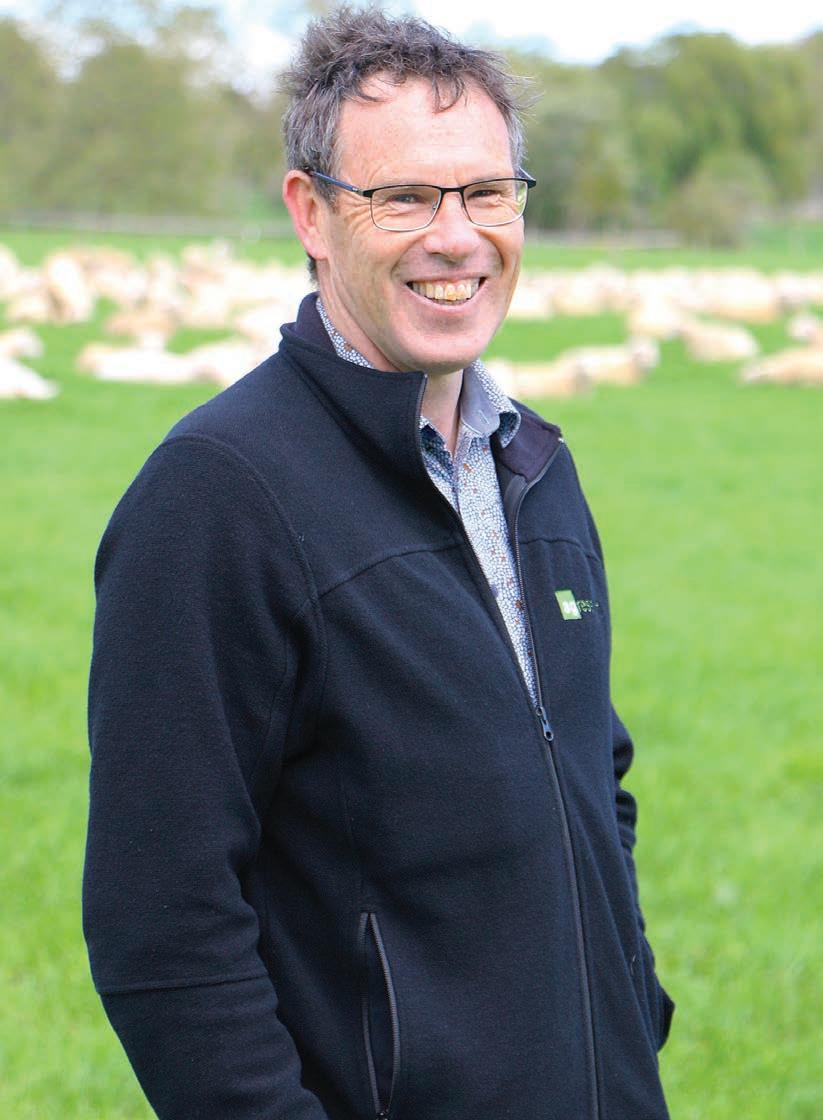
6 minute read
New Thinking
From gee whiz to must-have
Farmers are being inundated by ‘gee whiz’ technology, as the Internet of Things (IoT) takes over data capture on-farm. An AgResearch study identifies the power of this emerging tech to make grassland farming more sustainable. Its lead author David Stevens spoke to Richard Rennie.

HYPERSPECTRAL mapping, satellite images, virtual paddocks and remote cow collars are just some of the technology starting to eclipse conventional farming systems. But AgResearch scientists are cautioning about the need to sort the digital wheat from the chaff, while also not becoming overwhelmed by the gigabytes of data such tech can generate.
David Stevens says researchers took a big picture view on how these emerging technologies can help farmers maintain viable, productive pastoral operations, and soon saw the contrast between what farmers want and what researchers/developers can deliver.
“We as researchers can get hung up on the level of detail such technology can, or should be, able to supply. The ability to measure to the nth degree is valued by us, but when you are working with farmers, people who understand risk far better than the average person, getting down to very specific details, that can mean very little to them,” Stevens said.
That tendency for non-farming developers to get hung up on the detail can be exacerbated by equipment that is now capable of delivering nth degree of detail, overcomplicating and eclipsing whatever practical need the tech may serve farmers.
“So, the tech challenge now is to take it once developed and turn it back into a simple application, so that it can be made use of,” he said.
The work has also confirmed what Stevens himself has learnt from years of working with farmers, that it is often a simple outcome that draws farmers in, with data capture simply a background incidental possibly of more value to technicians and scientists.
A classic example is one of the first commercial users of the Halter technology, Dave Morgan of Te Awamutu. He has recounted how much he enjoyed an extra half hour lie in and a cup of tea before heading to the farm dairy once his cows were fitted with the remote collars, to find his cows had been ‘rounded’ up by a Halter alert and were waiting for him to be milked.
New Zealand’s outdoor, grassbased farming systems are also posing some challenges when it comes to calibrating some of the emerging tech to deliver consistent, comparable results.
Satellite mapping of feed levels is a classic example where two weeks’ of images can contain some significant differences that don’t make comparisons valid.
“It could be that what it sees on the day is correct, but changes in sunlight, cloud cover, even satellite angle, can be difficult to calibrate as a comparison on the next set of images,” he said.
The researchers found systems like Farmote that cross-check using a second type of technology are likely to maintain accuracy and earn farmer confidence more quickly.
With such technology generating so much data, the inevitable question falls about who ultimately owns it.
This is even more so when much of the technology hardware being developed, whether Halter collars or Zeddy smart feeders, are based on a subscription model with the software being updated remotely by proprietors.
“This technology is providing some huge insights on animal behaviour, production and health, not all of it necessarily of interest to the farmer,” he said.
“But it matters a lot as to where ownership falls, and subscriber models can make that ownership challenging, something of a grey area.”
He points out all large primary processors like Silver Fern Farms and Fonterra have recognised it as farmers’ data.

“I am not sure if all tech companies always look at it the same way,” he said.
Should companies be able to keep farmers on-side and confident about their data’s security, Stevens sees huge potential for NZ Inc to leverage off the data the tech is generating, getting insights into many aspects of farm and animal production in something akin to real-time, cloud-based field trials.
The study work has set the group up for their next phase, which will study how this emerging tech can be integrated to monitor issues that concern farmers, including animal performance, pest detection and water quality.
This includes working with Pāmu this winter, putting collars on some beef cattle and not others, and studying how they can draw virtual boundaries around waterways versus conventional grazing, and study the effect on water quality.
Researchers will also look at how satellite data can be fed into a monitoring system, to help determine optimal areas for grazing based on feed levels.
“There is a lot of exciting work ahead, and the next phase is really about how to bring these technologies together,” he said.
“We also must discern the difference between the fascinating and the important in the quest to develop digital solutions. However, we must also be able to recognise when ‘the fascinating’ becomes ‘the important’.”





David Stevens AgResearch

FIT FOR PURPOSE: Hi-tech developments will draw headlines, but also need to offer genuine, simple solutions for farmers to pick them up, says David Stevens.
HOW DO WE DEFINE A True Triple
WITH A WINNING HAND
Recent advertising by Alleva Animal Health, titled “How do you define a true triple?” suggests the actives in a combination sheep drench should work as well together, as they would if you had time to administer them individually, to be a “true triple”. Alleva also claims older triple drenches never had to prove they meet that standard.
We may have “older” triple drenches, but most farmers know with age comes wisdom.
When MATRIX® HI-MINERAL was registered in NZ in 2005, the regulator was provided with studies that showed all 3 of the main actives were individually safe and effective when combined in the product. As you would expect with registration of the pioneer triple active sheep drench in NZ.
That’s why we stand proudly behind the MATRIX® brand and why we call MATRIX®the TRUSTED TRIPLE. MATRIX® HI-MINERAL and the MATRIX® family of products remain the most popular triple active mineralised oral drenches for sheep in the NZ market today. FACT.


MATRIX® the TRUSTED TRIPLE since 2005.
MATRIX® Hi-Mineral, MATRIX® Mini-Dose Hi-Mineral, Iver MATRIX® Mini-Dose Hi-Mineral, Iver MATRIX® Tape Hi-Mineral and MATRIX® TAPE Hi-Mineral represent the MATRIX® Sheep family made here in New Zealand for New Zealand sheep farmers. made here in New Zealand for New Zealand sheep farmers.








